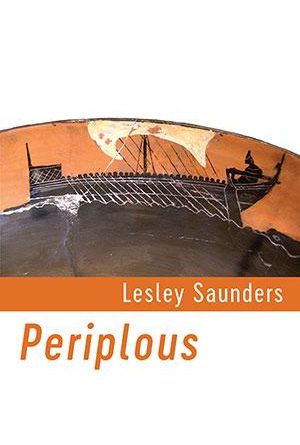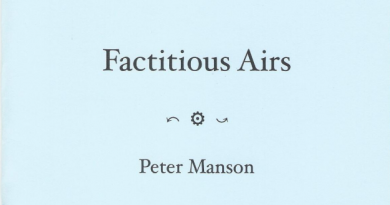Periplous by Lesley Saunders
–Reviewed by Alice Tarbuck–
Periplous is a fascinating and unusual pamphlet, in that it imaginatively recreates the journey of Greek merchant-explorer Pytheas – who it is said was the first person to circumnavigate the British Isles in 325 BCE. Because his account of the voyage is lost, this pamphlet seeks to ‘make good that lack’ by retelling what might have been his impression of the British Isles. Rather than use his voice to straightforwardly narrate the voyage, the pamphlet takes on multiple voices, time periods and indeed multiple languages and points of reference, to create a collage of the seafaring history of Britain as seen through a European lens.
For all it is a fairly short pamphlet then, it is extremely ambitious in scope. It moves from ancient Greece to Victorian Britain and beyond to the 1980s, whilst incorporating Greek, French, Old English into the verse. The translations are fairly extensive, which is helpful as often the language does not so much pull the reader in as shut them out. There is a need, perhaps, for the Shakespearean glossing technique to be used: say it once for the good seats, once for the groundlings. In ‘Tanguedad’, the final line quien sabe cuando the vuelva a ver? (who knows when I will see you again?) is separated from the rest of the poem by a line break, a technique used repeatedly by Saunders. Clearly this line underscores the rest of the poem, is a summation or reflection of it and yet, inaccessible except by turning away from the poem on the page, the effect lost because reading has been interrupted. Whether this was an editorial rather than authorial decision, it had significant impact on the ease and pleasure of reading the pamphlet, and could easily be fixed by the use of footnotes.
The project is also a somewhat difficult one from the point of view of its emotional impact. Pytheas’ voice diluted through the voices of others, removes some of the possible emotional impact of the work. ‘Imagining Albion’ for example, conjures England throughout the centuries, each stanza representing a different era from ‘gold-leaf leather-bound carolingians’ all the way to the ‘pink-lit-neon’ world of the eighties. These stanzas span five ‘blessed beehive huts’ glimpsed from the sea. The view from the sea allows the land to look beautiful: ‘a white doe in the brief sea-smoke’…. ‘the mirror-work/of pools’. History unspools like a coast line, and in the fourth stanza, pre-Socratic philosopher Thales, who believed that all things originated from water, is mentioned, name taken somewhat in vain as the ship encounters endless ‘tide coming in, the tide coming out’: monotony of the ocean. The final stanza is oddly jerking, offering a projected future where the coast is littered instead with ‘ice-cream parlours, bandstands, stand-up’. The swoop forward in time feels a little unsteady, and the water rhythms of the previous stanzas are lost. As with much of the collection, the difficulty here lies in attempting to access the emotional heart of the poem: it is unclear what the poem is saying about coastal development over millennia, although it seems to broadly privilege beehives and huts above amusement arcades. There is, however, no pervasive sense of loss or progress. Watching the shore from the sea may offer a good view but the pay off is that everything appears from a distance: nothing is truly engaged with at an emotional level.
This pamphlet casts light on an important and largely forgotten historic event. It attempts to speak for a lost voyage, to reclaim an important piece of history. It is well researched, and reworks the re-imagined voyage in some interesting ways. Its difficulty, however, lies in how to translate a forgotten voyage in 325 BCE into an emotionally and intellectually arresting work. Saunders is an excellent poet, and this is an ambitious project, but it falls a little short of what it might have been.




